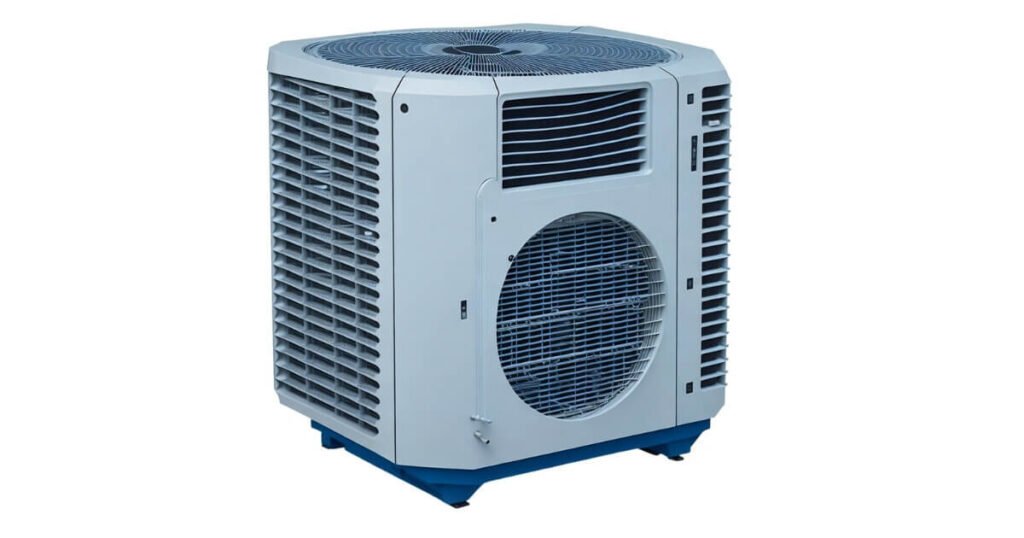Disadvantages of Evaporative Cooling: The Not-So-Cool Side
Disadvantages of evaporative cooling: In a world striving for energy-efficient solutions, evaporative cooling seems like an eco-friendly choice. It’s often called “swamp cooling,” evaporative cooling has become a favored option for numerous homeowners and businesses. There aim is to stay cool in a cost-effective and energy-efficient way. This technique harnesses the natural evaporation process, drawing heat from the air and emitting cool air in return. Although evaporative cooling systems provide undeniable advantages. It’s essential to carefully consider any potential drawbacks before deciding if it’s the most suitable choice for your requirements. Remember to use the English language.

This article will go through the different drawbacks of evaporative cooling. Including its restricted use in some areas and potential effects on the environment and human health.
Table of Contents
Disadvantages of evaporative cooling: Limitationas of Evaporative Cooling in Humid Climates
- A significant disadvantage of evaporative cooling lies in its dependency on ambient moisture levels. The system’s cooling potential is directly linked to the gap between the air’s dry-bulb temperature and its wet-bulb temperature. To state it more simply, as humidity rises, evaporative cooling becomes less effective.
- Evaporative coolers may struggle to provide sufficient cooling during the warmest summer months in places with high humidity, such as the southeastern United States. In such situations, traditional air conditioning systems tend to be more effective in maintaining comfortable indoor temperatures..
Maintenance Challenges with Evaporative Cooling Systems
- Evaporative cooling systems require more frequent maintenance than traditional air conditioning systems due to their reliance on water as a cooling medium. To ensure optimal performance and prevent the accumulation of mold, mildew, and other pollutants, it’s essential to regularly clean and inspect pads, filters, and water distribution systems.
- Additionally, water pumps and motors need regular inspection and servicing to avoid breakdowns, which can lead to costly repairs or replacements. Some households and business owners may find the additional maintenance needs burdensome if they lack the time, money, or knowledge to keep their systems in good working order.
Water Consumption Considerations
- Despite consuming significantly less energy than conventional air conditioning systems, evaporative cooling systems necessitate a consistent water supply to operate effectively. Remember to use the English language. In areas with limited water resources or where water conservation is a priority, this can pose a considerable drawback.
- The volume of water consumed by an evaporative chilling apparatus fluctuates contingent upon factors such as its magnitude, external thermal conditions, and atmospheric humidity. Verily, a quintessential domestic marsh cooler might devour a range of 3 to 15 gallons per hour.
Indoor Air Quality Concerns
- As evaporative coolers rely on water to cool the air, they can increase indoor humidity levels, creating an environment conducive to mold and mildew growth. This is particularly problematic for individuals with allergies or respiratory issues, as mold spores and mildew can exacerbate their symptoms.
- Evaporative fans can also bring dust, pollen, and other allergens from outside into the house. While some systems are equipped with filters to trap these particles, they are not always effective at removing them entirely.
Cooling Area Limitations
- Evaporative cooling systems are typically best suited for smaller areas or single rooms, as they often struggle to cool larger spaces effectively. This limitation stems from the fact that evaporative coolers rely on the circulation of outdoor air, which can be challenging to distribute evenly throughout a large area.
- In contrast, central air conditioning systems are designed to cool entire buildings and can maintain a consistent temperature throughout. For homeowners and businesses with large spaces to cool, evaporative cooling systems may not be the most efficient choice.
Incompatibility Issues on Enclosed Spaces
- Evaporative coolers work best when fresh air is continuously circulated into the area being cooled. As a result, they require open windows or doors to allow for proper air exchange. This can be problematic for those looking to maintain a controlled environment or a secure space, such as businesses with valuable inventory or homeowners concerned about security.
- In enclosed spaces with limited ventilation, evaporative cooling systems can quickly become less effective, as they are unable to expel the humid air they produce. These sorts of settings are better served by conventional air conditioning systems, which function efficiently without necessitating open windows or doors.
Disadvantages of evaporative cooling: Noise Pollution
- Although evaporative coolers typically produce less cacophony compared to conventional air conditioning apparatuses, they may still engender a substantial degree of auditory disruption. The sound of the water pump and the fan, combined with the movement of air, can be disruptive for some individuals, particularly in residential settings or smaller workspaces.
- The sound intensity of an evaporative cooling system fluctuates based on the apparatus’s size and quality, but it may escalate to 70 decibels, equivalent to a vacuum cleaner’s clamor. For individuals who are noise-sensitive or necessitate a tranquil milieu, evaporative cooling arrangements may not be the most fitting alternative.
Disadvantages of evaporative cooling: Potential Water Damage Risks
- Water damage is a concern when using water in evaporative cooling systems if the system fails or is not properly maintained. Water leaks or overflows can damage flooring, walls, and furniture while also creating a climate prone to mold and mildew growth.
- To prevent water damage, it is essential to routinely inspect and maintain your evaporative cooling system, including checking for leaks, ensuring the water distribution system is functioning correctly, and replacing worn-out pads or filters.
Conclusion Of Disadvantages of evaporative cooling
Evaporative cooling systems provide significant benefits, such as energy efficiency and lower operating expenses. While it’s essential to consider the disadvantages discussed in this article. It’s also crucial to recognize that an evaporative cooler can be a fantastic choice for your household or enterprise.
FAQs: Disadvantages of Evaporative Cooling
Is evaporative cooling suitable for all climates?
It is better to use evaporative cooling in dry, low-humidity environments. In humid climes, where the high level of air moisture limits cooling capabilities, it is less efficient.
How much water does an evaporative cooler use?
A residential evaporative cooler has the capacity to consume anywhere from 3 to 15 gallons of water per hour. This consumption rate is contingent upon several variables. Such as the cooler’s size, the ambient outdoor temperature, and the prevailing relative humidity levels.
Can evaporative coolers cause mold and mildew growth?
Increased indoor humidity levels resulting from evaporative cooling can create an environment conducive to mold and mildew growth. Regular maintenance, including cleaning and inspection of pads, filters, and water distribution systems, can help mitigate this risk.
Can evaporative coolers effectively cool large spaces?
Evaporative cooling systems are generally more effective at cooling smaller areas or single rooms. They often struggle to cool larger spaces evenly, as they rely on the circulation of outdoor air. Which can be challenging to distribute throughout a large area.
Do evaporative coolers require open windows or doors for proper operation?
Yes, evaporative coolers work best when fresh air is continuously circulated into the area being cooled. Open windows or doors are necessary to allow for proper air exchange and efficient operation.
Can evaporative coolers cause water damage?
If an evaporative cooling system malfunctions or is not properly maintained, there is a potential risk of water damage from leaks or overflowing water. Regular inspections and maintenance can help prevent water damage and keep your system functioning optimally.

